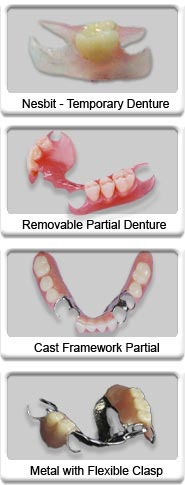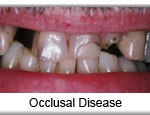The reasons for replacing a lost tooth are multiple and have already been discussed in previous editorials. The one thing that almost all dentists will agree upon is that except in very rare and specific circumstances, a missing tooth should be replaced. There are multiple ways to replace a missing tooth. Each with its own set of risks, benefits, expected longevity, and costs.
Choices for replacing a missing tooth can be broken down into two major categories; removable and fixed. As the term implies, removable appliances can be taken out of one’s mouth, cleaned and reinserted by the patient. Fixed appliances are not intended to be removed and are generally cemented or bonded in place.
The most common terms for removable appliances are “flippers” and “partial dentures”. The commonality of all removable appliances is that they have acrylic teeth to match the size, shape, and color of adjacent teeth in the patient’s mouth. They vary in the materials that hold the teeth in place and how they attach to the patient’s natural teeth. An all acrylic removable partial denture or “flipper” is exactly as the name implies; denture teeth attached to pink acrylic. An RPD or cast framework partial denture contains denture teeth and metal as a supporting substructure. The strength and durability of a metal substructure makes an RPD much better fitting and long lasting.
The advantages of removable appliances are that they can more economically replace multiple missing teeth than similar fixed appliances. A one toothed “flipper” is often a short term appliance worn while preparing for a fixed appliance. The disadvantages of removable appliances is that they can becoming embarrassingly loose in public, their movement creates sore spots, and imperil adjacent teeth if they are not properly removed and cleaned.
The two most common options to replace a tooth with a fixed appliance is either a dental implant or dental bridge. Implants and bridges are cemented or bonded in place and are not removed. Both mimic the size and shape of the teeth they replace with modern dental porcelains and feel and function like natural teeth. Perhaps the best way to contrast a bridge and implant is to look at how the replaced missing tooth is supported. An implant is a titanium “root” that can be placed in the jaw to which a crown can be bonded or cemented. Most people say placing an implant is far less uncomfortable than having the original tooth removed. A bridge requires preparing the adjacent teeth to the missing space and fabricating a prosthesis that fits over the adjacent prepared teeth and fills the missing space. This prosthesis is cemented or bonded in place and is not removed. Similar dental porcelains are used. Deciding upon a bridge or implant is very situational, and is best discussed and decided upon with your dentist.
Complete denture wearers no longer have to suffer with sore spots and embarrassing loose dentures. Implants can be placed and teeth attached to them. Implants can also be placed and a denture fabricated that “snaps” into place. Although it can be removed to clean, one can eat and function almost as well as natural teeth. With the advent and predictability of implants, one no longer needs to suffer with moving teeth, lack of taste, and sore spots.
See your dentist and discuss a plan that best meets your needs and the existing condition of your mouth.
Drs. D. Michael Gioffre Jr, and Georgette B. Binnersley provide Dentistry for Seniors for comprehensive care for maintaining function and good hygiene that can prevent tooth loss and other oral health problems.
First State Dental
D. Michael Gioffre Jr, DDS
Georgette B. Binnersley, DDS
Wilmington, DE 19806
Office: (302) 652-5312


